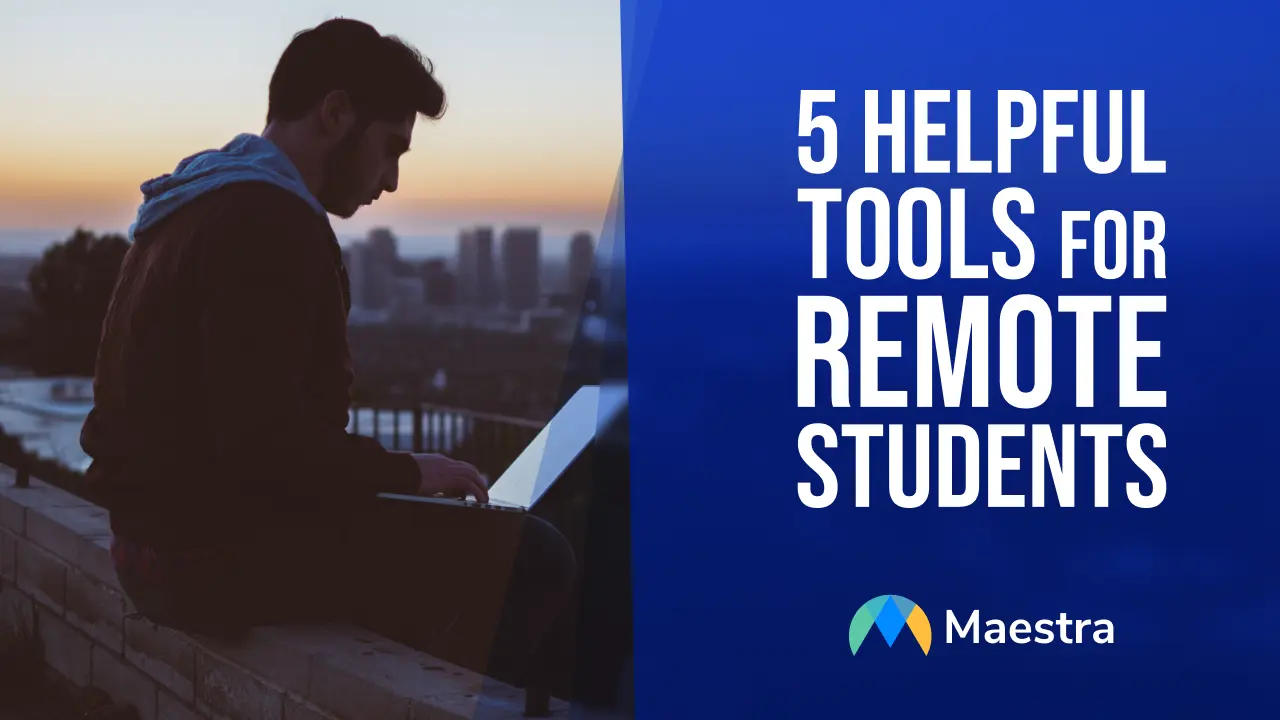5 Helpful Tools for Remote Students

-
Pear Deck Extension
Pear Deck is a system designed to easily integrate with classroom tools many teachers already use, such as Google Slides and learning management systems (LMS) such as Schoology, Canvas, Google Classroom, and Microsoft Teams. The idea behind Pear Deck is to make slide-based presentations more engaging by allowing instructors to present in real-time. Teachers can see what students are currently viewing in their deck, and multiple-choice questions can appear on the screen to pace the lesson and encourage students to follow along. Shy students will be relieved by Pear Deck’s anonymity. Pear Deck shows that students are viewing and interacting with the slides, but does not reveal their identities. This little feature takes the edge off of the pressure created in classrooms where students are called on by name. In addition to being a great add-on for Google Slides presentations, Pear Deck also has lots of ready-made lessons and templates found in their Content Orchard. Another neat aspect is Pear Deck’s additional resources to make it easier for teachers to engage students with presentations. This includes a sample question gallery, help articles, and a user forum, among other ideas and resources. Pear Deck is 100% free, but there’s also a paid version that offers a few more perks such as access to a teacher dashboard, added audio to slides, and draggable and drawing responses. -
Video Conferencing Tools
Many online classes up to the collegiate level are done through video conferencing. Teachers often hold discussions, lectures, and learning sessions through applications like Zoom or Google Meet. In an age where technology is constantly evolving, we often take advantage of the simple, easy tools at our disposal that make learning more accessible. Video conferencing tools are essential learning tools because they can connect students and teachers all over the world regardless of physical location. Using these tools, instructors can have entirely virtual classrooms, with lectures and discussions all done through one app. Features like Zoom’s “breakout rooms” also make it easier for students to do group projects together and collaborate in real-time. Many teachers also hold office hours over Zoom for video chatting, giving students a chance to ask questions or get help with tough course material. At the end of the day though, the most powerful part about video conferencing tools is that they make remote students feel connected. Studying or teaching from home can be isolating, and it’s nice to be able to connect a face and voice to a name. -
Remind App
Chances are your students are tuned into their text messages and social media, so instead of trying to get them to pay attention to deadlines through email or LMS, reach out in a format you know that they’ll see! Enter Remind, a mobile messaging platform that allows teachers to instantly send messages to students via text or app notification. For both students and teachers, this tool takes the frustration out of forgetting deadlines or missing important class information. Remind allows you to schedule reminders and share them with students. The best part is that the app is totally free, although there is a paid option that offers more bells and whistles. -
Grammarly Extension
Grammarly is an online tool that can be downloaded as an extension in your browser. Using AI and natural language processing, helps users improve their writing. When a user types in a spelling mistake, uses punctuation incorrectly or has a clunky sentence, Grammarly will highlight the word and suggest a correction. AI isn’t always perfect, and its suggestions can sometimes be redundant or unnecessary. It also doesn’t recognize the spelling of specific names or words, such as fictional characters with strange-sounding names. Regardless, Grammarly is a great tool for students. It saves time, helps build better writing habits, and catches minor errors that could cost students points off an essay or paper. Grammarly is free to download, but you will have to pay if you want Grammarly Premium. The main difference between the two is that the latter simply gives more advanced suggestions and can recognize errors in tone, word choice, and citations. It can also help rewrite sentences and make formatting suggestions. Most students, especially those in k-12 schools, don’t have the budget to pay for a premium AI writing assistant. The free version should work just fine for the average student just looking to bump up their writing a notch. -
Maestra
Whether you’re a teacher recording a video for your students or a student who wants to take detailed notes during a live lecture, using an online service to transcribe audio or video can be a game changer for virtual classrooms. Maestra is the all-in-one option for caption creation, audio and video transcription, and video voice-overs. Get high-quality transcripts for your audio or video in minutes with our automatic audio/video-to-text converter. Transcribe educational videos in a few short steps:- Upload your video or audio file. Go over to Maestra’s website and sign into your account. Then, just drag your file into the upload section or choose the file straight from your computer’s directory. All video and audio formats are supported by Maestra, making the uploading process simple and seamless!
- Transcribe audio instantly. Our AI automatically begins transcribing your file as soon as you import it. Within minutes, you’ll receive your transcript.
- Fine-tune and edit. With Maestra’s interactive text editor, you can make any minor changes or tweaks to the transcript as you see fit.
- Export. Finally, you can easily export your transcription file in a variety of formats. Additionally, you have the option of embedding the audio files with the transcription on your website or class page, so that the transcript is easily accessible to your students.
